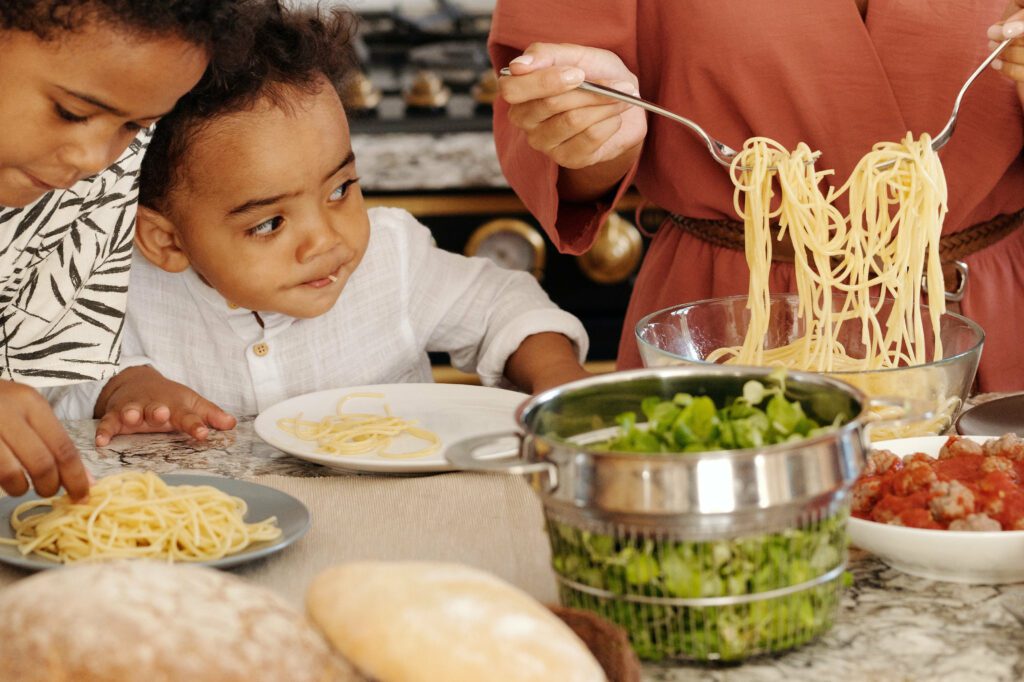Cooking for Toddlers and Growing Children: Nourishing Bodies with Creativity and Care
Cooking for kids can be both a rewarding and challenging endeavor. As parents, we strive to provide our little ones with the essential nutrients they need to grow and thrive, but getting them to eat the right foods can often feel like an uphill battle. From navigating the food pyramid to dealing with picky eaters, it’s a culinary journey that requires patience, innovation, and a sprinkle of psychology. In this guide, we’ll explore some practical strategies and ideas to make cooking for toddlers and growing children a delightful adventure.
Redefining Snacking: Healthier Options That Kids Love
Snacking plays a significant role in a child’s diet, and it’s an excellent opportunity to introduce healthy choices. Swap out the usual potato chips with sliced raw cucumbers lightly sprinkled with salt. This simple treat not only provides a dose of vegetables but also satisfies their snack cravings. Melons like cantaloupes are another hit – they’re refreshing, delicious, and packed with essential vitamins.
Beyond spaghetti: Exploring Nutrient Diversity
While spaghetti or noodles might be a childhood favorite, it’s important to diversify your child’s diet. Experiment with incorporating whole grains, proteins, and vegetables into their meals while keeping them kid-friendly. Thankfully, the market now offers a variety of prepackaged convenience foods that include whole grains, catering to the demand for healthier and fuss-free options.

Embracing Freshness: The Power of Fruits and Veggies
Fresh fruits and vegetables are nutritional powerhouses. Whenever possible, opt for fresh produce over canned alternatives. Canned fruits, often soaked in sugary syrups, lack the natural goodness of their fresh counterparts. Frozen fruits and vegetables are also viable alternatives, as they generally have fewer additives and retain more nutrients.
Calcium Counts: Building Strong Bones with Dairy
Calcium is crucial for growing children, aiding in the development of strong bones and teeth. Milk is an excellent calcium source – make it their preferred drink during meals. You can also sneak in calcium by melting a slice of cheese over their favorite vegetables. Indulgences like ice cream, yogurt, and pudding can be occasional calcium-rich treats.
Unleashing Culinary Exploration: Encouraging New Tastes
Monotony can lead to mealtime boredom for both parents and kids. Instead of sticking to the same recipes, encourage your children to try new foods. This not only keeps things interesting but also helps them develop a broader palate. Introducing variety allows them to discover both preferences and dislikes, fostering a healthier relationship with food.
Tiny Chefs: Involving Kids in the Kitchen
Getting your kids involved in meal preparation can be a game-changer. When children contribute to cooking, they’re more likely to feel a sense of accomplishment and pride, which translates into their eagerness to try the dishes they helped create. This collaborative approach not only makes mealtime more enjoyable but also helps them appreciate your cooking efforts.
Taming the Picky Eater: Patience and Perseverance
Dealing with a picky eater can be frustrating, but it’s essential to remember that children have evolving tastes too. What they dislike today might become a favorite tomorrow. If they reject a meal you prepared, consider involving them in the planning process. Ask for their input on ingredients or dishes, making them feel empowered and more inclined to eat the final product.
The Joy of Culinary Bonds: Creating Lasting Memories
Cooking for toddlers and growing children is more than just a necessity; it’s an opportunity to create cherished memories. Sharing time in the kitchen, experimenting with flavors, and enjoying the fruits of your labor can strengthen your bond with your children. These moments not only shape their eating habits but also foster a love for cooking and togetherness.
In Conclusion: A Wholesome Culinary Adventure
Cooking for toddlers and growing children may come with its challenges, but it’s also a chance to instill healthy eating habits, culinary curiosity, and fond family memories. By offering a variety of nutrient-rich foods, involving them in meal preparation, and being patient as their tastes evolve, you can set them on a path of lifelong appreciation for nourishing foods. As you embark on this culinary adventure, remember that every meal is an opportunity to nourish both their bodies and their love for good food.


